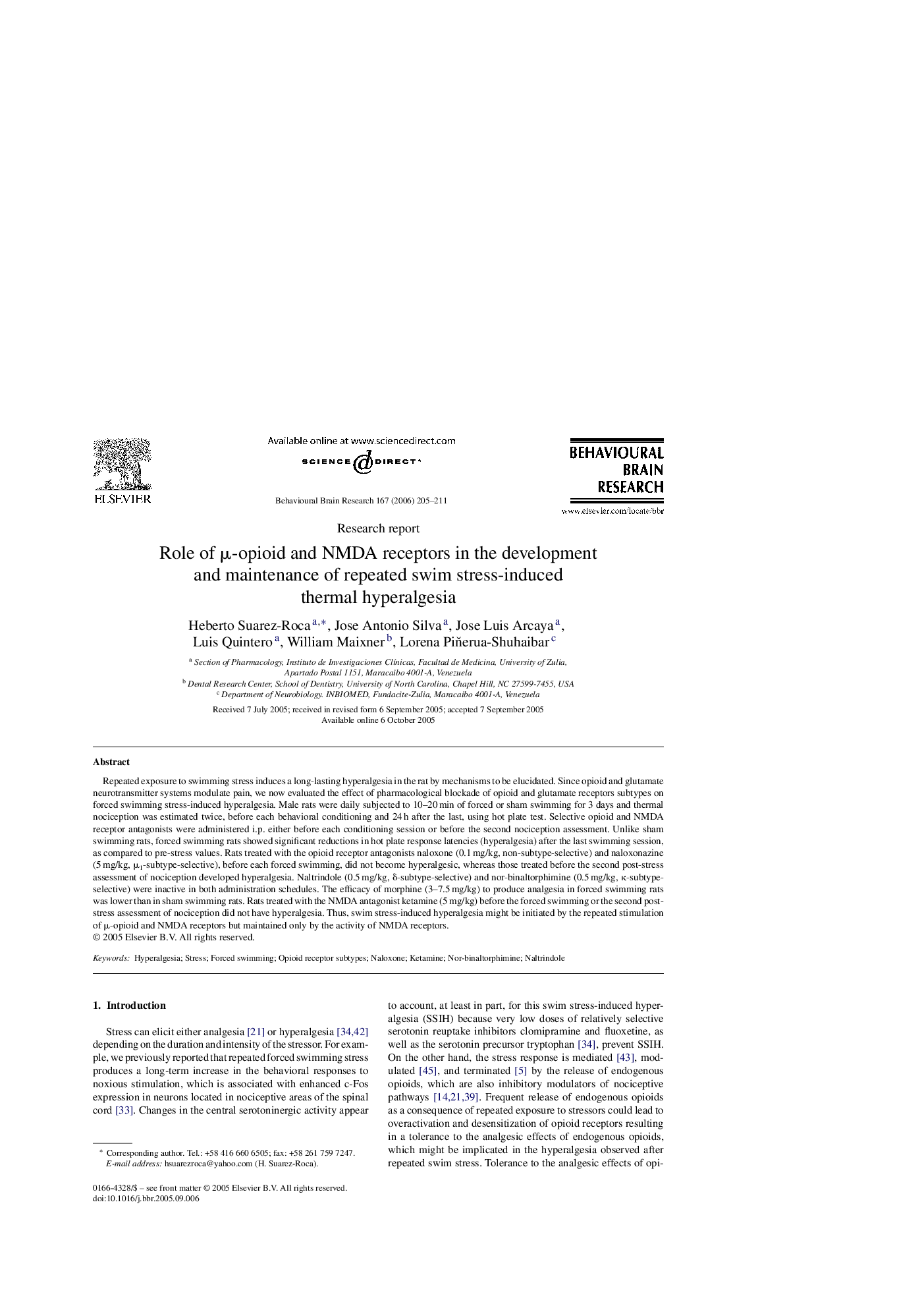| Article ID | Journal | Published Year | Pages | File Type |
|---|---|---|---|---|
| 4316236 | Behavioural Brain Research | 2006 | 7 Pages |
Repeated exposure to swimming stress induces a long-lasting hyperalgesia in the rat by mechanisms to be elucidated. Since opioid and glutamate neurotransmitter systems modulate pain, we now evaluated the effect of pharmacological blockade of opioid and glutamate receptors subtypes on forced swimming stress-induced hyperalgesia. Male rats were daily subjected to 10–20 min of forced or sham swimming for 3 days and thermal nociception was estimated twice, before each behavioral conditioning and 24 h after the last, using hot plate test. Selective opioid and NMDA receptor antagonists were administered i.p. either before each conditioning session or before the second nociception assessment. Unlike sham swimming rats, forced swimming rats showed significant reductions in hot plate response latencies (hyperalgesia) after the last swimming session, as compared to pre-stress values. Rats treated with the opioid receptor antagonists naloxone (0.1 mg/kg, non-subtype-selective) and naloxonazine (5 mg/kg, μ1-subtype-selective), before each forced swimming, did not become hyperalgesic, whereas those treated before the second post-stress assessment of nociception developed hyperalgesia. Naltrindole (0.5 mg/kg, δ-subtype-selective) and nor-binaltorphimine (0.5 mg/kg, κ-subtype-selective) were inactive in both administration schedules. The efficacy of morphine (3–7.5 mg/kg) to produce analgesia in forced swimming rats was lower than in sham swimming rats. Rats treated with the NMDA antagonist ketamine (5 mg/kg) before the forced swimming or the second post-stress assessment of nociception did not have hyperalgesia. Thus, swim stress-induced hyperalgesia might be initiated by the repeated stimulation of μ-opioid and NMDA receptors but maintained only by the activity of NMDA receptors.
